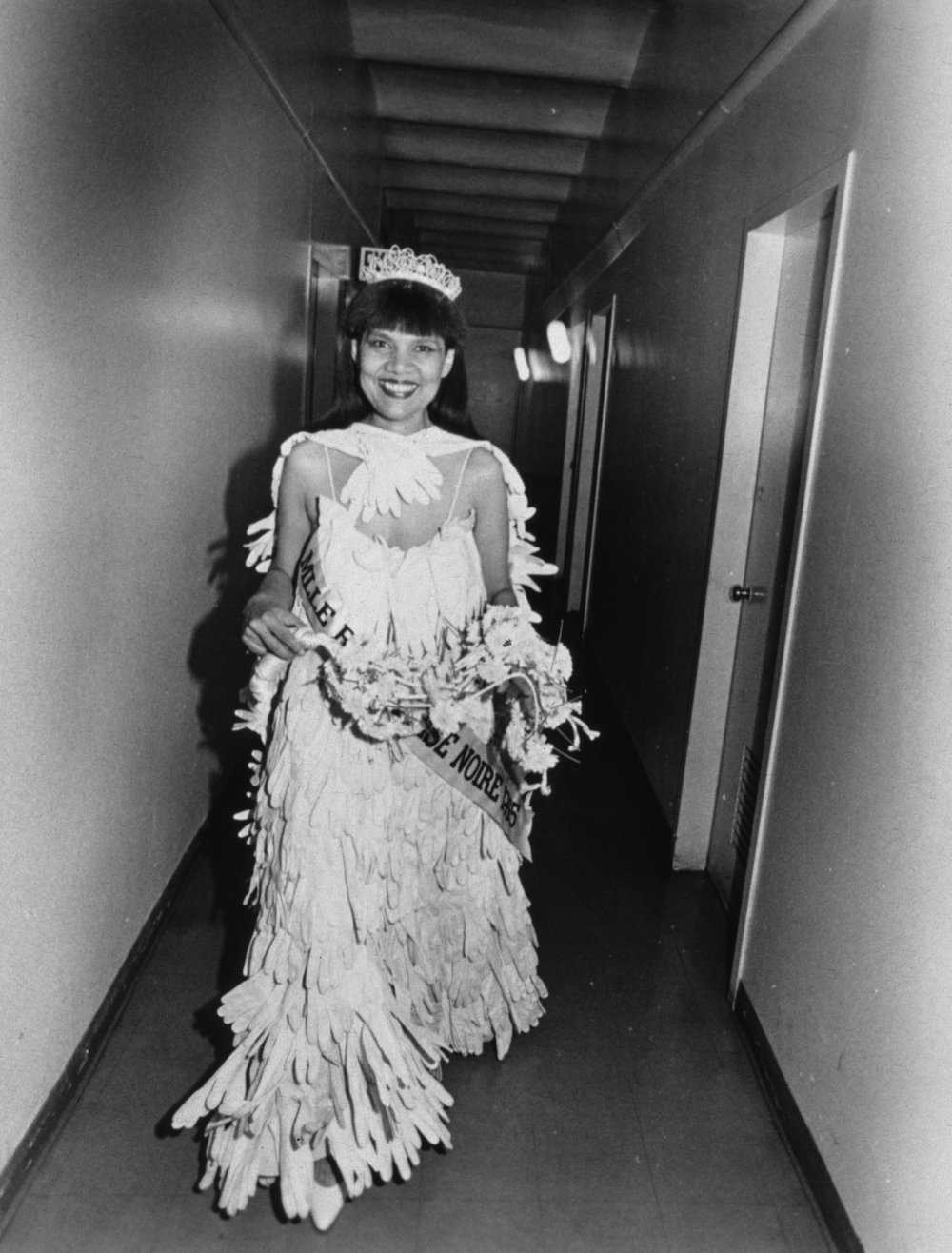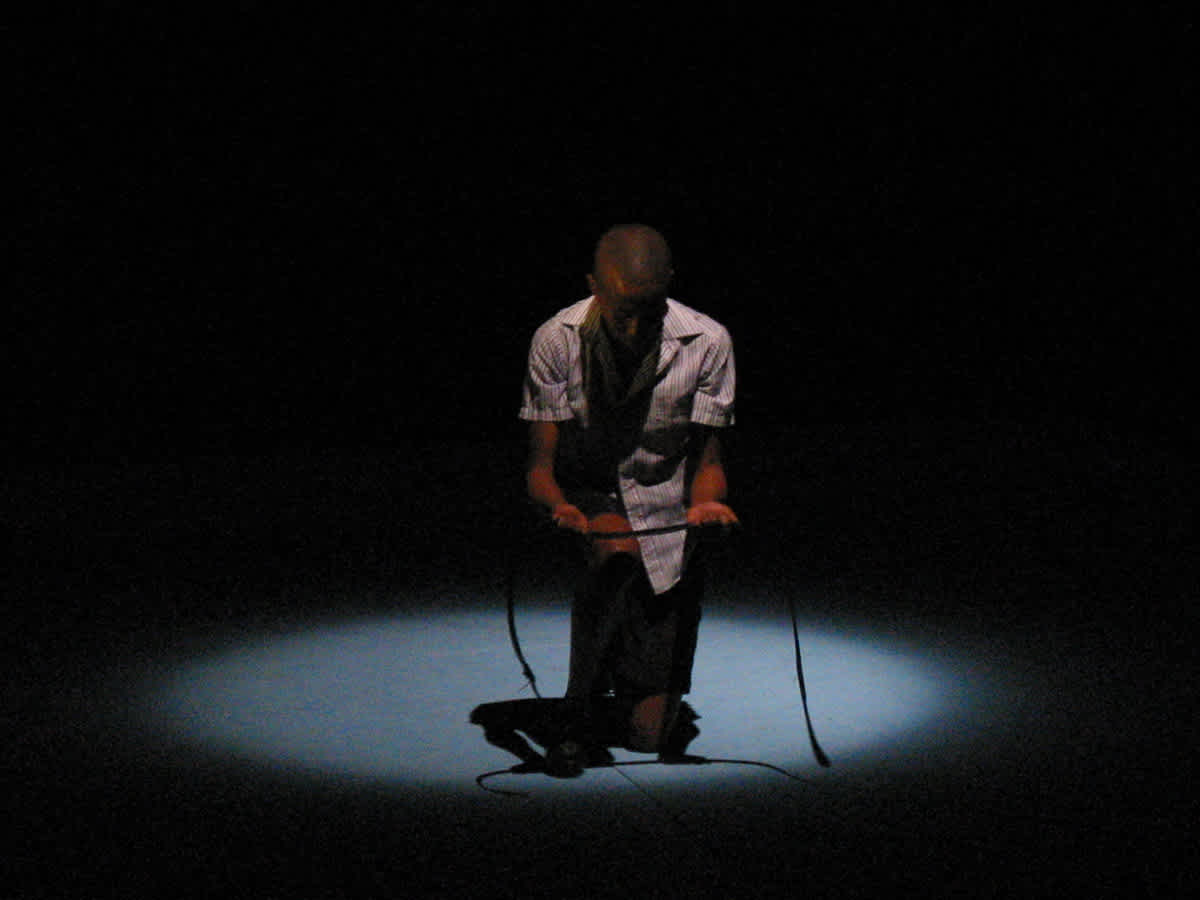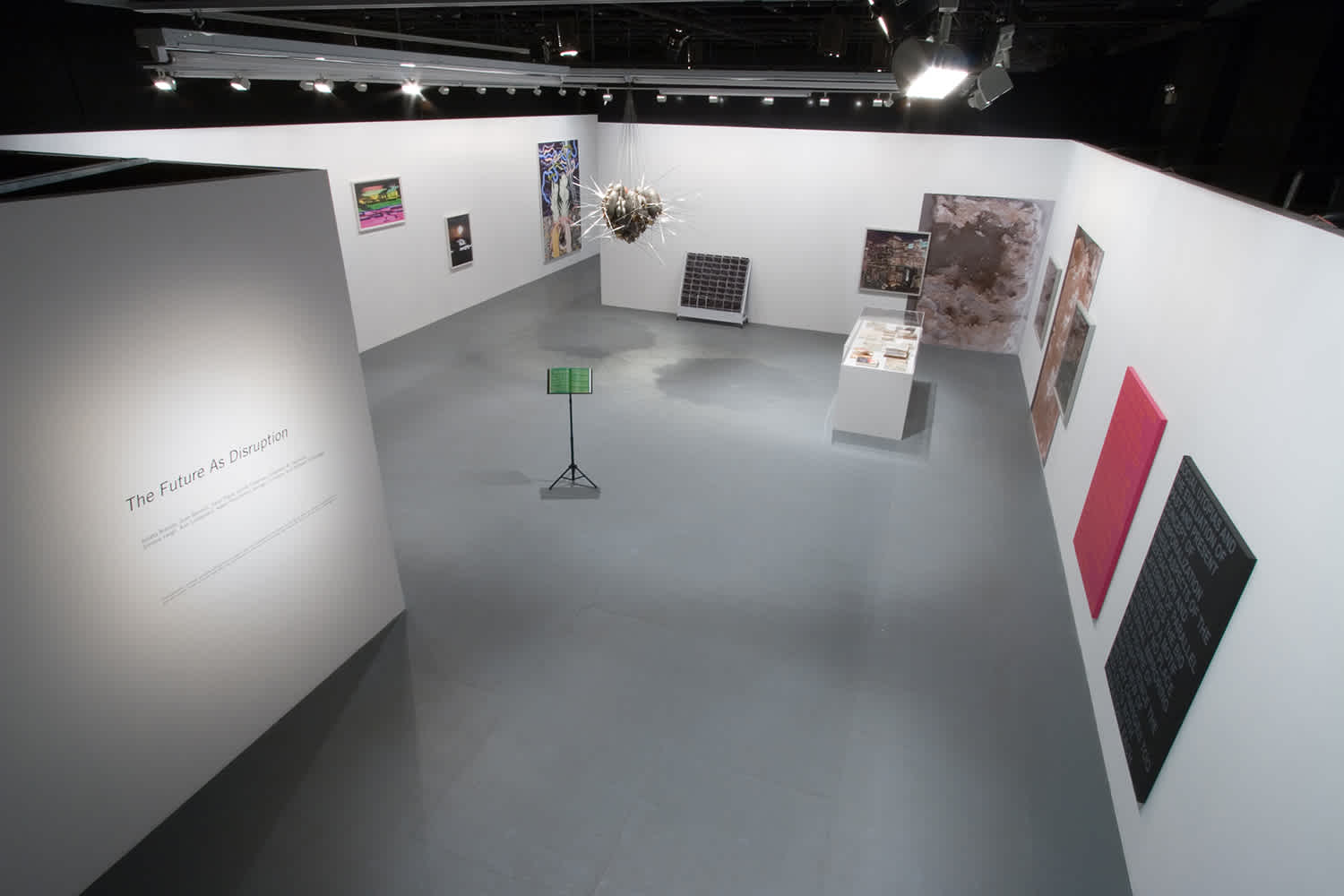
Credits:
Tsige Tafesse, 2023-2024 Curatorial Fellow, Matthew Lyons, Curator, The Kitchen, Rashida Bumbray, curator and choreographer
July 11, 2024
Tsige Tafesse, 2023-2024 Curatorial Fellow, reflects on the group exhibition The Future as Disruption in conversation with Matthew Lyons, Curator, The Kitchen, and Rashida Bumbray, curator and choreographer, who co-organized the project together at The Kitchen in 2008.
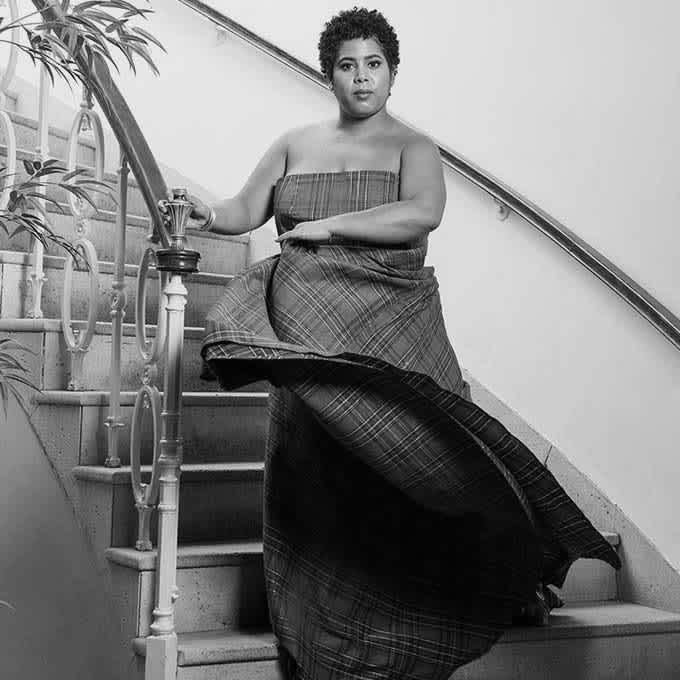
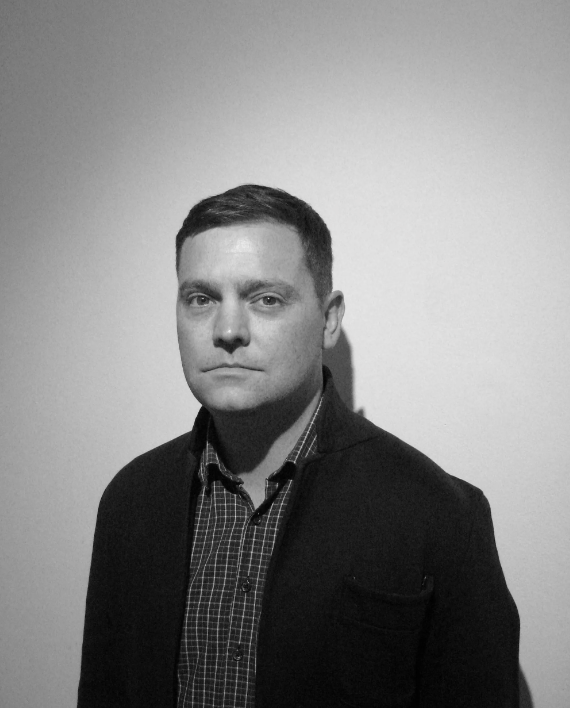
"In Archaeologies of the Future, Frederic Jameson’s careful analysis becomes a critical toolbox not just for understanding Utopia and its stakes, but for the construction and recognition of Utopian narratives, for new ways of imagining Utopias. The form of Utopia itself, the temporality inherent in the narration of that better future to come, and the radical break that necessarily separates under Jameson's lens, the means by which we can understand ‘future as disruption’. The most insistent demand for Utopia is communicated by the impossibility of its realization."
– Duda, J. (2005). Review of Archaeologies of the Future: The Desire Called Utopia and Other Science Fictions, by F. Jameson, MLN
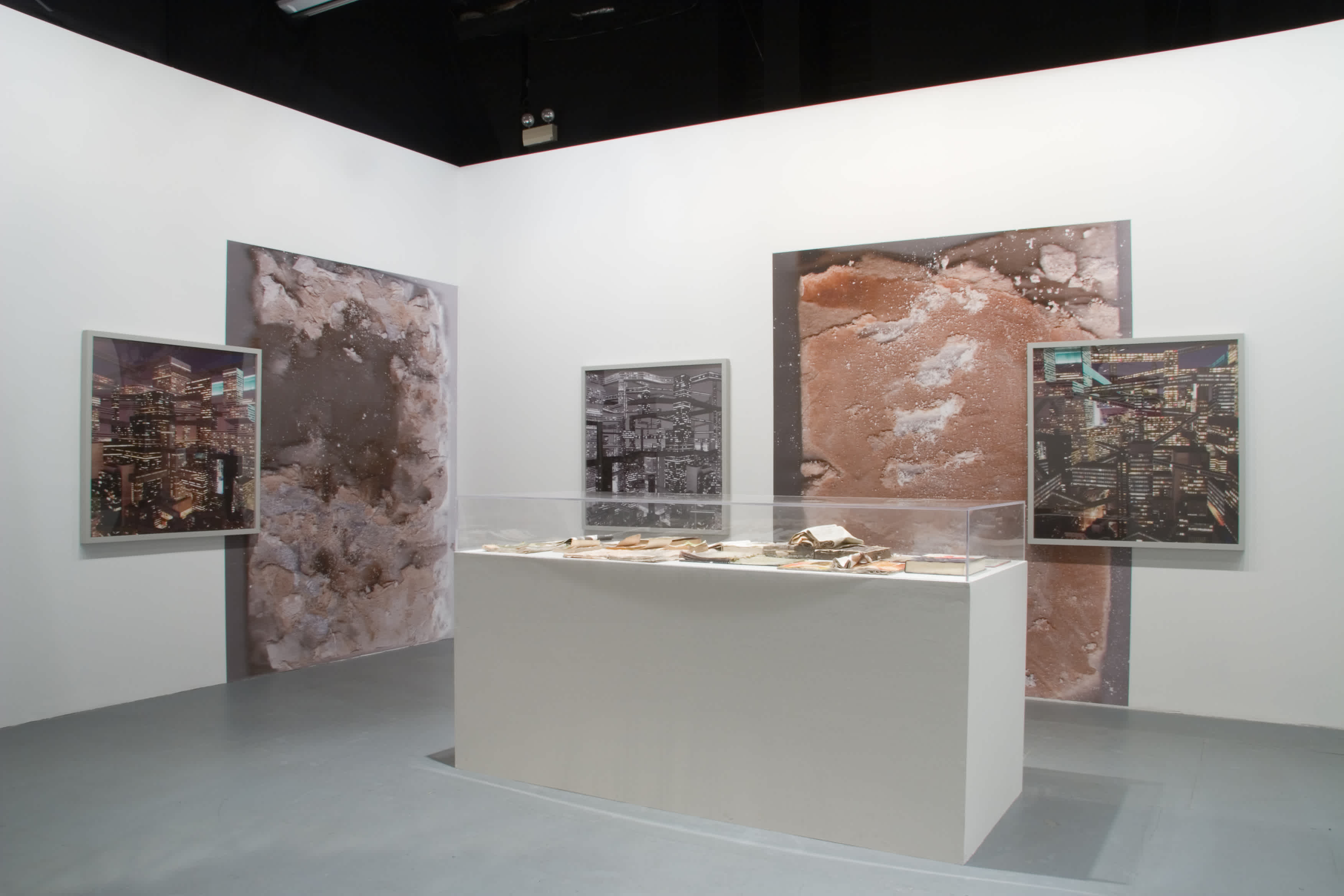
The exhibition The Future as Disruption (June 18, 2008–August 1, 2008), co-organized by Rashida Bumbray and Matthew Lyons at The Kitchen, engaged with critic and philosopher Frederic Jameson's theoretical propositions to explore the notion that another world—vastly different from our current—is not only conceivable but essential and possible. This group exhibition mounted in The Kitchen’s second floor gallery space brought together artists Julieta Aranda, Joan Banach, Sean Dack, Jonah Freeman, Olalekan B. Jeyifous, Simone Leigh, Ann Lislegaard, The Otolith Group, Adam Pendleton, Mungo Thomson, William Villalongo, and Mark Aerial Waller. From sculpture to photography and video to painting, these artists not only offered visions of future as escapist fantasies but strategically deployed science fiction as a tool to interrogate the technological, social, psychological, and political dimensions of the present. Their works serve as inquiries into the potentialities of the future, each piece a critical reflection that extends beyond the speculative to engage with the realities of our world.
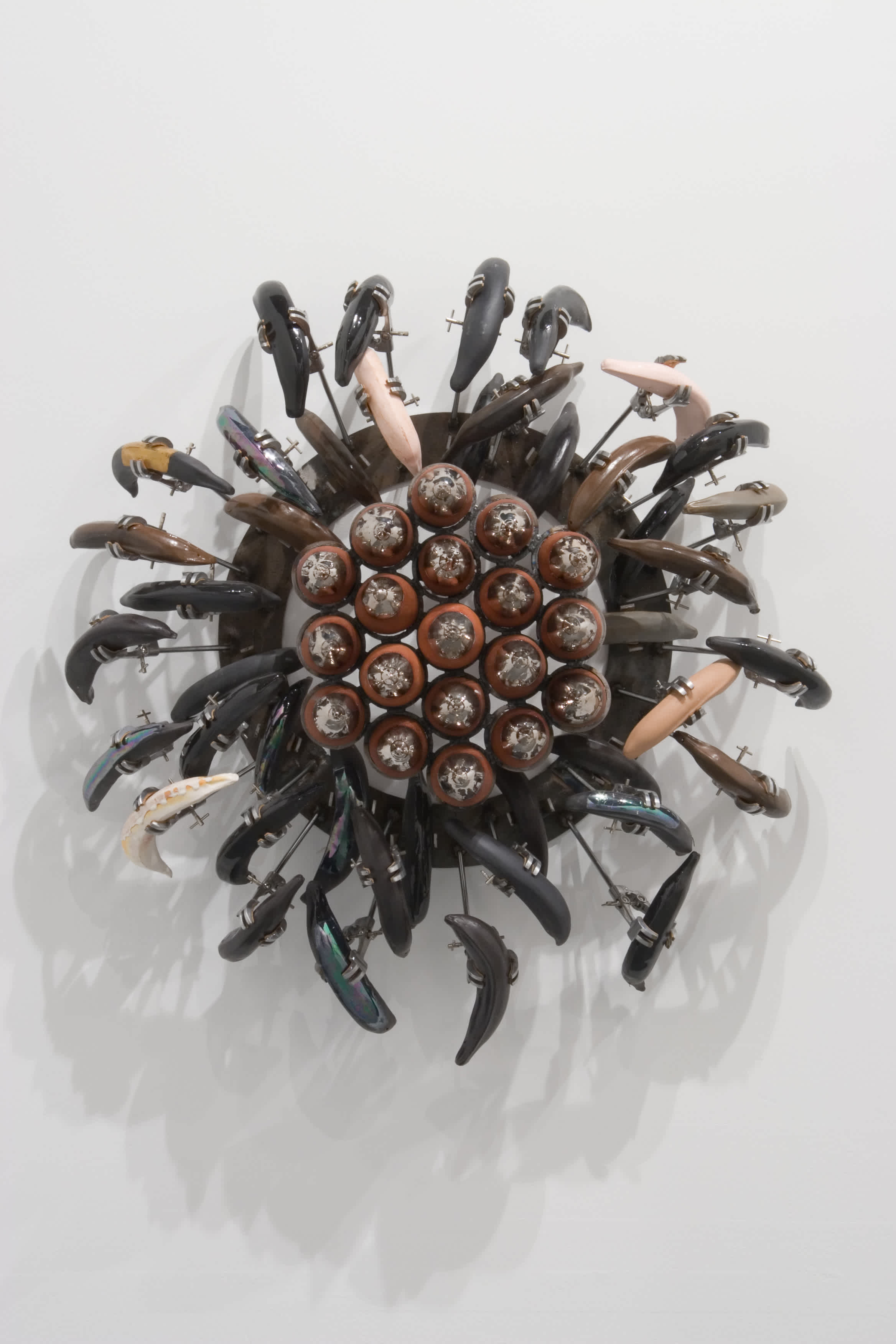
The Future as Disruption interprets Jameson's idea of the “radical break”—the point where the future becomes a disruption of the present rather than a direct continuation. In this interview with Bumbray and Lyons we reunite these curators in a dialogue that delves into their motivations, inspirations, and reflections on the exhibition. Their discourse not only reviews these thematics but also discusses The Kitchen as a space where art, apart from being viewed, is experienced. The Future as Disruption was not just an exhibition; it was a critical landscape where the future was perpetually rewritten, an invitation to radical forms of imagination and world-making.
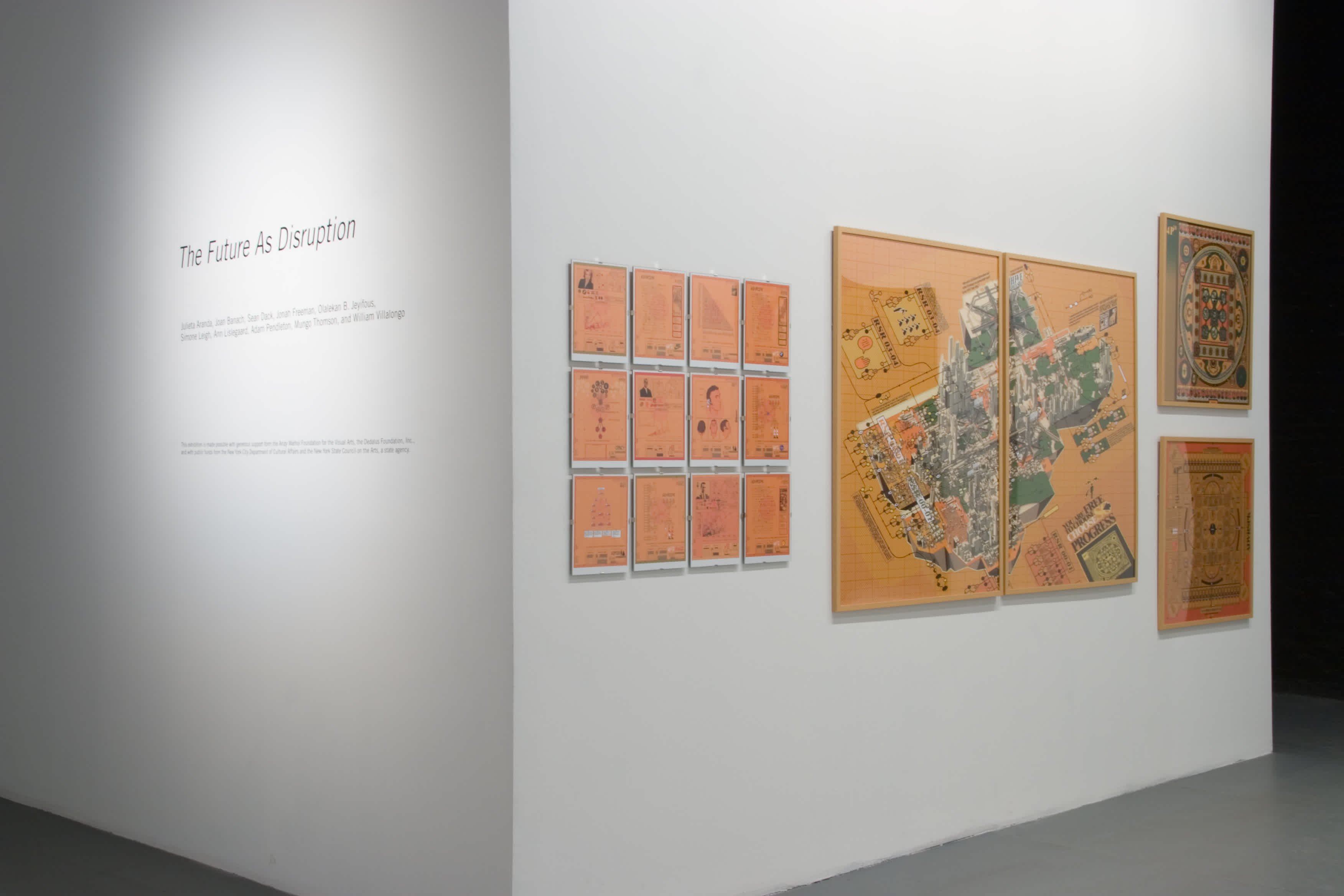
The exhibition emerges amidst the backdrop of the 2008 economic crisis, former U.S. President George W. Bush’s “war on terror in the Middle East,” an evolving media landscape rife with technological advancements, Proposition 8, and nation states on the cusp of significant political change. Lyons and Bumbray’s collaborative curatorial approaches weaves a tapestry that not only reflects their individual journeys and encounters with significant figures like Debra Singer, former Executive Director and Chief Curator of the Kitchen, Thelma Golden, current Board Member of the Kitchen as well as Executive Director and Chief Curator of the Studio Museum of Harlem, and the artists featured in the exhibition, but also their shared commitment to exploring interdisciplinary practices. For example, the structure around Afrofuturism is a framework living alongside and within various artists' work in the exhibition, whereby artists like Simone Leigh apply a way that expands a look both forward and backwards. This conversation reveals how their exhibition was not a static display but an active site of cultural and temporal negotiations, underlining the importance of platforms for fostering long-lasting relationships with artists. As we continue to navigate through our own "future as disruption," the insights from Lyons, Bumbray, and their collaboratively organized exhibition offer both a reflective mirror and a beacon towards emerging curatorial possibilities.
Tsige Tafesse: I would love to hear both of you just introduce yourself and tell us a little bit about your journey to The Kitchen.
Matthew Lyons: My name is Matthew Lyons. I'm a curator at The Kitchen. I arrived at The Kitchen in 2005, via Debra Singer, who was the new Executive Director and Chief Curator at The Kitchen. I believe she arrived in 2004. I met Deb in graduate school when she was a curator at the Whitney Museum when I took a class with her on the history of sound art. It was at that moment when she left Whitney to come to The Kitchen to change the curatorial structure and begin building a team of in-house full-time curators that I was hired in the summer of 2005.
Rashida Bumbray: I came to The Kitchen also through Deb Singer. I think I was the second curator she hired after Matthew. I had been at the Studio Museum of Harlem which was exciting and a good place for me to train, but I also felt like a little bit of a misfit because I was really interested in so many interdisciplinary kinds of practices.
TT: I'm happy to support this reunion and having the opportunity to speak with you both about this exhibition The Future as Disruption which occurred earlier on in both your careers at The Kitchen in 2008. What was going on at the time for you that led to the creation and collaboration of this exhibition?
ML: The title comes from the philosopher, Frederick Jameson. It's a chapter in a book of his that had recently come out called Archaeologies of the Future, and in that book, there's a chapter called The Future as Disruption. I’d zeroed in on that phrase and then started seeing work around. From what I remember in one of our curatorial meetings discussing it with Deb and Rashida, Rashida brought some concepts to the table quickly. It was clear that we should do this together.
RB: We were coming off of eight years of Bush, so he definitely wasn't running again. We knew there was going to be some kind of a big change in the national landscape. There was the beginning of the financial crisis. I think the subprime mortgage crisis was already underway.
TT: I was very young at the time, but in my remembering of 2008, demonstrations opposing Bush’s war on terror era were the first protests I ever attended. In reading about the exhibition, placing it in that context of uprising and transformation pre-Obama - a gazing into the future seeking disruption makes a lot of sense on the outside looking in.
RB: It's wild. I also think during this pre-Obama moment there was a little bit of this hope in the air [that was] such a dichotomy between the [later] financial crash. There also was this possibility and a lot of the interest in a term we use a lot now Afrofuturism. I feel like everyone's tired of the idea, but I remember during that time just thinking about how so many of the artists in the show were looking both backwards and forwards. I remember talking a lot about the idea of Afrofuturism in regards to artists like Simone and Lake. Again they were like in this practice of looking back and forward at the same time. The Samuel Delany play happened at The Kitchen. Matthew, was this around the same time?
ML: It was. I think it was a little later, but yes, I definitely remember Delaney in general was very present for visual artists around that time and theater makers working in this vein.

TT: I put on an Afrofuturism conference in 2015, in collaboration with a lot of friends at The New School (Micheal Ayree, Jasmine Wright, Ladin Awad, Jazmin Jones, Yeelen Cohen, Jamilla Okubo, Sehreum Tom, Ivoree Levis, Carly Heywood, Rikki Byrd, Kiani Brown, Kierra Branker, Dominique Mills, Tigist Selam, Malikah Abeó, and many others). We had just come off of 2014, which was a big year in terms of organizing around Black Lives Matter after the death of Michael Brown in Missouri. A lot of us were in undergrad and were devastated. Traveling around the country, raging, and organizing as our bodies were falling apart. We clung to and were really grateful at that time to this framework—the work done around this term of Afrofuturism. It served as a lifeboat in what felt like really stormy seas. I'm grateful for these artists, interventions, and exhibitions that aided in propelling this space forward.
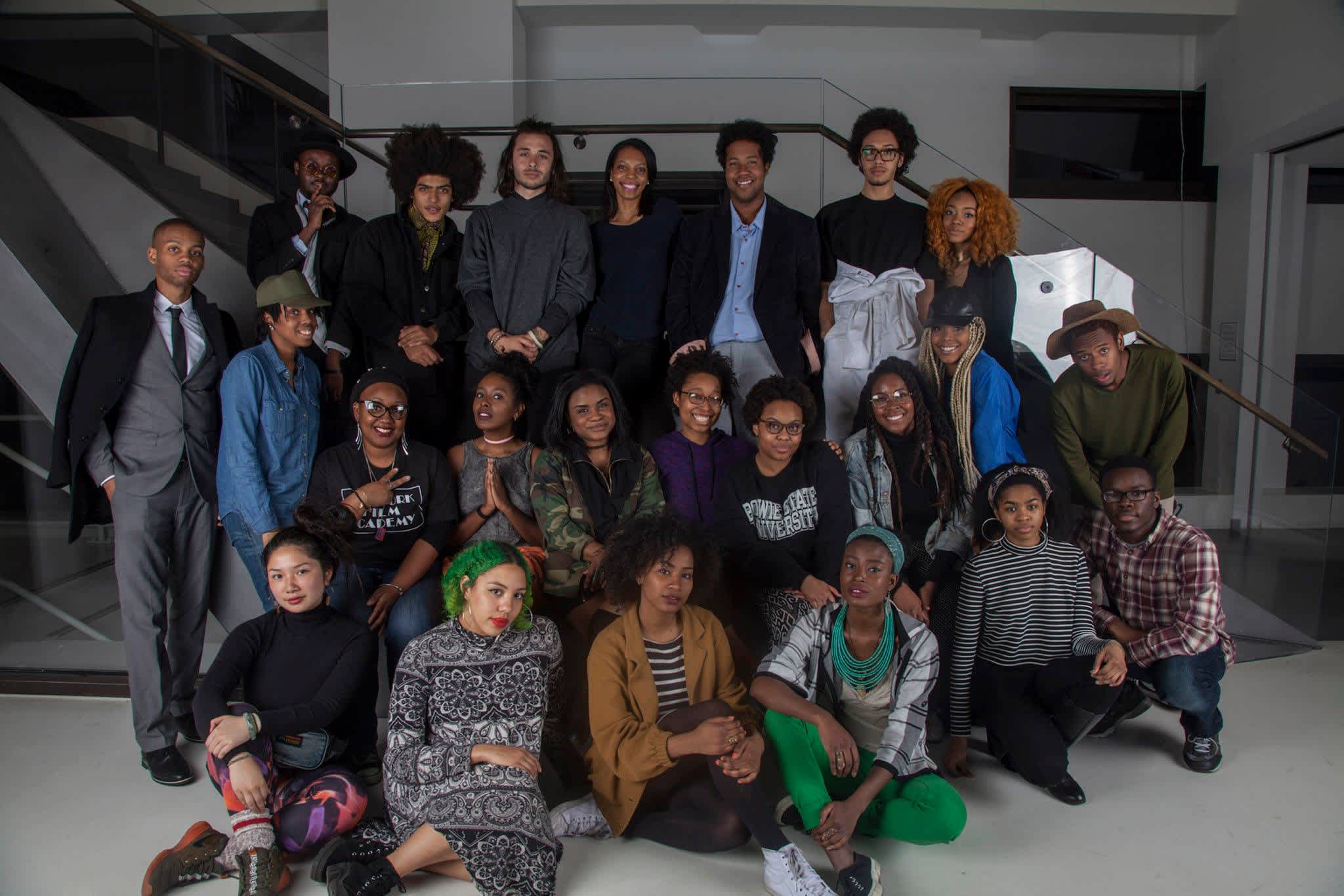
RB: I think that sometimes in the art space you can get a little disconnected, like on the one extreme this could be a lifeboat when you are deep in activism and in this kind of functional work. [But] sometimes art can abstract these ideas. For lack of a better word, one may say, “Oh, well, we're tired of Afrofuturism” but then for another generation of people, they're like, “we need this desperately right now.” I also feel like that's a little bit of what this show was like. We were in conversation with Delany, obviously, Octavia Butler within this cycle of work that has resonance. When we feel like we're done with it, then it comes back again, because the world shakes, there's an earthquake, uncertainty then again a need for ways that brings things back forward.
TT: Echoing this movement of bringing things back, I'm really moved by witnessing what seems to be like long-lasting relationships you both have developed with artists that were featured in the show and just in general in your practices, how they've continued to grow. I wonder how you see yourselves as curators in your role, supporting individual artists with their careers and how they kind of navigate this sometimes opaque field?
Do you seek particular artists out to grow with because of an affinity to their practice? Or is this something that happens by happy accident?
ML: Well, for myself, one thing that comes to mind—especially as I have had a very long tenure here is something that's slightly specific to The Kitchen as a very unique arts organization that is over 50 years old now. Its unique profile in the arts presenting landscape as a community, inter–, and multidisciplinary space meant that it remained a home for people throughout their career. There are many, many artists who presented work early on at The Kitchen and then returned at a later point in their career and then returned again towards the end of their career.
There was a sense even when I first arrived that it was this home for people. It wasn't an institution where an artist passed in and out of the doors only once to then go on their merry way. For many artists, they got the message that they could really come back and stay with us.
Part of being in The Kitchen is taking up those pre-existing relationships and continuing them and letting them grow while also planting seeds for the future and new relationships. For instance, I think this [exhibition] was Simone Leigh's first engagement with The Kitchen.
That is an amazing example how we would continue to support Simone through Rashida's ongoing engagement with her continuing into a solo exhibition that was to follow this exhibition. Now Simone is a board member of The Kitchen and that is just one real shining example of the many kinds of ongoing relationships that artists have with The Kitchen over a long arc.
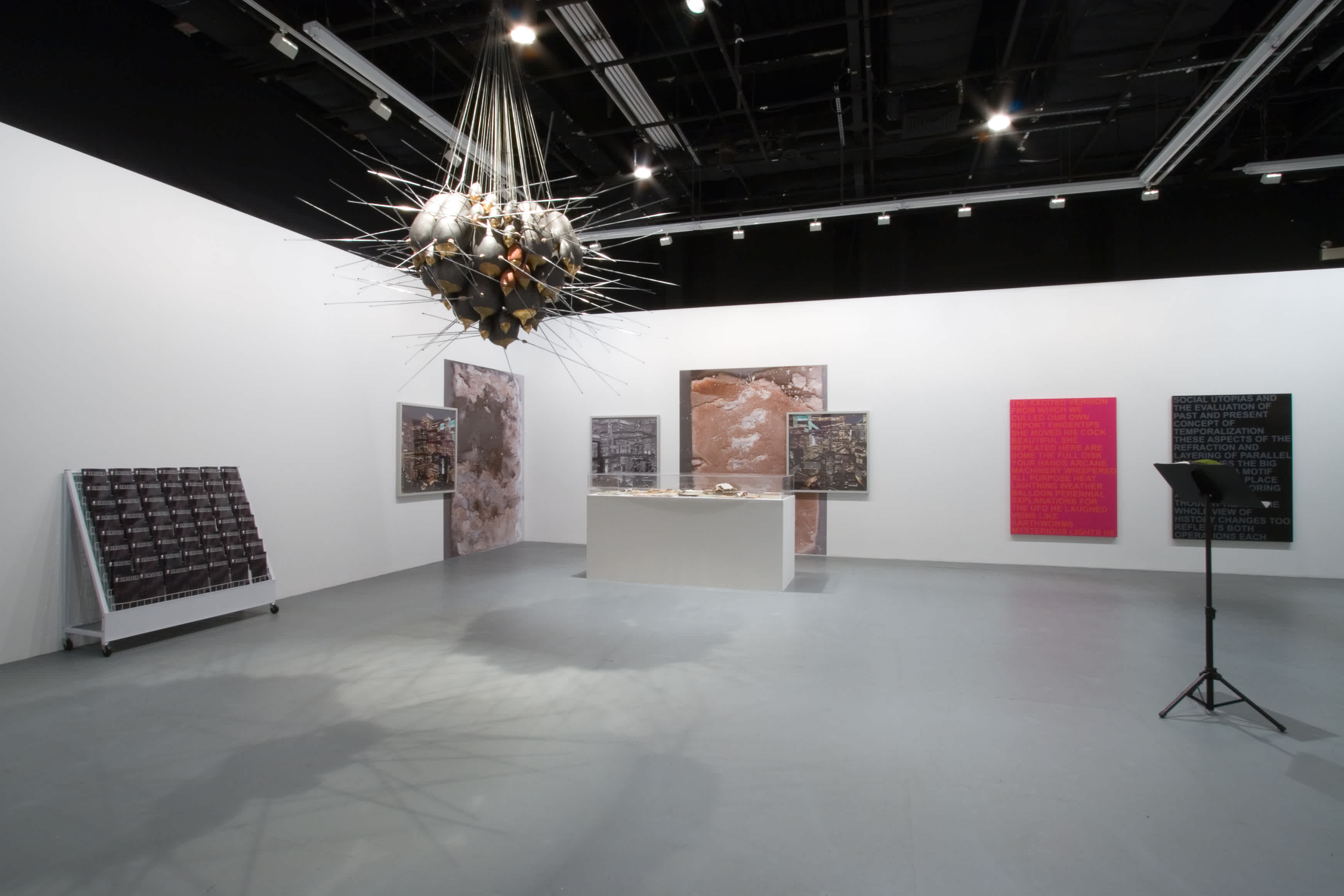
RB: I think the tenets of The Kitchen are what make it so special. It’s a space for experimentation and so even artists who have other kinds of opportunities to present their work in very different contexts will present work at The Kitchen wherein they don't have to necessarily consider how commercially viable or even interesting it is from a capitalist perspective. They can present work that is risk-taking for them, their first film or their first performance or something that is really stretching them. I think that that is what also makes the relationship so special between the curator and The Kitchen artist, because you're offering them and supporting them through usually stretching themselves. The dream of The Kitchen is that there is this dance audience and literature audience and the art audience, etc. It allows people to be in a community in different ways and also witness their practice from the perspective of people who are looking and may not be already a part of their community.

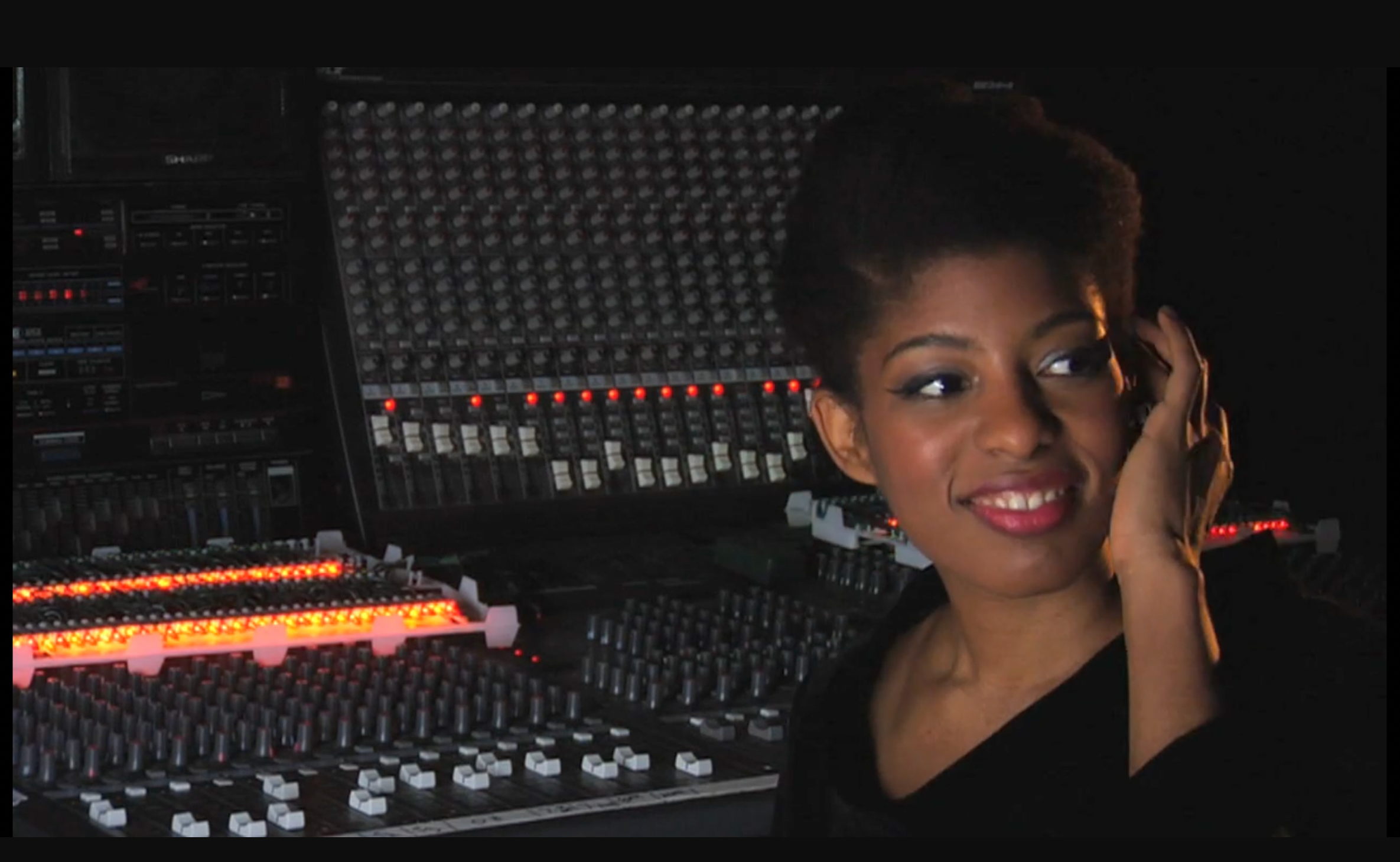
I think that's what is really special about this idea of the relationship with the curator and seeing artists through their lifetime. In my case, obviously Simone, Matthew mentioned, but, you know, Simone and I met either 2006 or maybe 2008, the same year of the show. We can never remember, but I remember seeing her. She had her studio at the Lower Manhattan Cultural Council and I went to the LMCC studios and I was telling Matthew about her Uhura video. Matthew and I also started talking and we're like, “Oh, let's include the sculptures as well.” It was an opportunity for Simone to show a lot of work. On her piece Queen Bee and we were just talking about the antennas covering the entirety of the piece as an object that used to have a technical function and now it becomes a reminder of a different era of technology. When she installs them she closes them down and once she hangs the sculpture, she pulls them all out. There's this idea of this space between the technology and an animal space or an insect. We also talked a lot about the Afrofuturism with that, the idea of looking forward and looking back.
William Villalongo and Lake I knew from the Studio Museum days because Will was an Artist-In-Residence when I was there. We became friends and Lake was in a show called Harlem Worlds, which Thelma Golden curated and I was the exhibition coordinator for, that was about asking architects to design new projects for Harlem. I do feel like these relationships with artists definitely grew through this project for sure and we're also extensions of previous relationships.
TT: We are now in the future that The Future As Disruption was perhaps invoking. How is it looking to you? How would you, now, perhaps approach this exhibition differently? Are there artists today that feel essential to include if remounting a similar concept?
RB: I definitely wouldn't change the show. If I could collapse time, I would just add to it as opposed to changing anything because I feel like we were the people that we were during that time creating that show for a reason and working with those artists for a reason. It might have been interesting to have a more robust conversation on Afrofuturism at that time. I think that it would have been great to have made a book or catalog.
ML: Yeah, I was looking back. It was really well covered. All of those outlets don't exist anymore for real discursive reflection on these kinds of propositions. Even the idea of a summer group exhibition, which was a typology of exhibition making that was really part of the landscape at that time has fallen away a little bit.
Obviously, a lot of real technological changes have happened since then that have really impacted our lives, like the whole way that algorithms control everything we see and anticipate everything we're going to say. I think also maybe a huge new fold that maybe wasn't as present then would be about the climate emergency.
Additionally, What can we even say about the future? How far can we even imagine the future? How far forward can we look into the future and still include ourselves in it?
RB: That's the end of this zoom call. Mic drop.
TT: Mic drop. Cue the exit.
ML: I do think there was a part of what the word disruption sparked for us was a moment of disruption followed by something quite positive and revolutionary and now I think the right word is collapse.
RB: It's much more dystopian now.
ML: I think that was what the actual Jameson book was about; the idea of what currency does this concept of utopia have now in our moment. When that book was published, which I think was around 2005, like just a few years before the show.
TT: My mind is racing a bit. Things now do feel dire and I see that reflected. I wonder how audiences would respond today. It makes me want to return to this comment Matthew that you made about the exhibition and it being well received by press and visitors. What felt like the audience reactions in that 2008 moment? Were there any responses to the exhibition that surprised you? Do you feel that reception might feel different today, just given some of the things that we mentioned?
ML: Well, I just looked back at all the press to prepare for this, so I have it fresh in my mind which is why I was noting this. The Future as Disruption got the best coverage for an exhibition that I ever did at that time. It was in Artforum, The New York Times, and so forth,as well as lots of magazines and other forms of online writing.
But one thing that a couple of the critics mentioned was the role of literature in this show and how central literary texts and references were for many of the artists in the show—from Delany to J. G. Ballard,from the artist Julieta Aranda literally shredding the printed word from science fiction texts to make her apocalyptic dust landscape.
RB: Adam Pendleton.
ML: Adam Pendleton for sure, as well as Sean Dack and Mungo Thomson taking out all of the words and the people from existing science fiction comics and graphic novels.
I was surprised because I don't remember us centering that as principle in the selection of works, but that was a perceptive note. It takes someone from outside to see that and to point that out. We need this role of criticism and to support that in our art landscape and ecology, art writing.
RB: My husband now is the director of this organization called Critical Minded, which is really to support cultural critics of color and advocate for cultural critics of color. You know, I just hear him every day and it's a real crisis. Like Matthew said, a lot of these smaller publications don't even exist anymore because they're so hard to maintain. Also it's hard to be a critic, right? In terms of sustaining your career and being paid a living wage. I believe we do suffer as a cultural community when we don't have enough criticism and ways to really interpret, understand, proliferate ideas that artists are interested in and curators are interested in. I feel like it is kind of a gaping hole that needs to be really bolstered and considered as the crisis that it is.
ML: I think this is so great as a point of reference, a point of comparison that it wasn't always like this. There couldn’t have been that robust response now because those publications aren't there.
RB: It seems like you have to do two or three other jobs or something at the same time to survive the career and be extremely individual and perhaps blog alone. Whereas the Village Voice still existed during this time. The Voice would have all the critics meet together. They had an office where they would talk about what they were doing and had to do backtracking for each other. There were all these kinds of protocols in place when you have that type of community of cultural critics in a formal way. I do feel like that is really missing now and is super important as we reflect on this.
TT: Reflecting forward, do you have any hopes or projections you want to leave us with for the next future disruptions? I know we've touched on the dystopia of it all, but maybe post our nyc earthquake today, there's something that's been shaken up; ready to be cooked.
ML: The thing that comes to me is how satisfying it was to work collaboratively with Rashida on this. Working collaboratively in general on these kinds of curatorial efforts and bringing together artists from different kinds of communities into the same space was incredibly rewarding, meaningful, and an important way to think about other kinds of larger forms of exhibition making, biennials, and things like this, especially for young curators. It's a great endeavor to think with another person, bounce ideas off each other, do studio visits together, and go see work together.
I remember going to Rush Arts and seeing Simone's video pieces playing on two paired laptops. I seem to remember that the video was playing on one laptop and the other laptop had mistakenly gone to screensaver mode so it was a galaxy screensaver. We were thinking alot about that. Then we spoke about it with Simone. She was like, “Oh, no, no, no, no. That was a mistake.” I also remember going with Rashida to visit the painter Joan Banach, who lived and worked here at Westbeth. That was my first time actually going into someone's live-work space and thinking and working collaboratively with a co-curator. That was a really memorable experience that followed me through my career.
RB: Thank you. I would second that a lot because I do feel like I really miss that. I miss the opportunity to collaborate with other curators. There is the collaboration with the artists, but that's different, and by having that other opportunity to collaborate I really learned so much. It's a great space of exchange in learning, but it's also fun. Working with Matthew we had two different perspectives, but we also had the fun to have someone to think with. For example, we were going to show the Uhura video piece by Simone and Matthew said,” we need to show the sculpture too!” I feel like that's a part of my whole story now, working with Simone and her sculptures. It's really important to have colleagues and to have peers because those are your most important collaborations, especially, as Matthew said, for younger people, because I think everyone always talks about mentorship and all these things, but for me, it's always been my peers and my contemporaries that have been the most important relationships in terms of my growth, just as a person, and as a curator. I appreciate Deb Singer for that, because she came from The Whitney when it was a much more competitive kind of place where everyone was working on their one show, but I think she also encouraged us to do things together. Working on this project together felt like just having that as a mode of working is great for the community.
TT: Thank you both for sharing your experiences and ending on a note of encouraging collaboration is a really beautiful place to leave people. I feel like there's a real sweetness to helping host this reunion. Thank you for taking the time.

